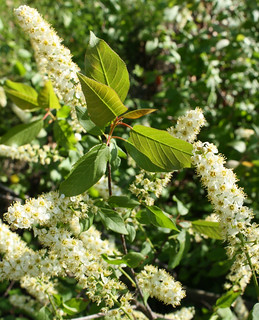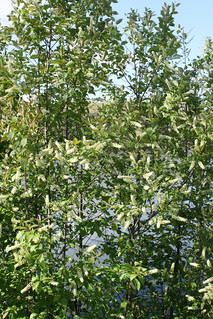
(Click on images to enlarge)
Another from Jerry Pavese Park.
I was first introduced to these on one of my childhood visits to my grandparents in southern Missouri. A little neighbor girl there told me the trees got their name from the bitter taste of their fruit. She was brave enough to taste the fruit — and spit it out. I wasn't brave enough to taste it.
The Wikipedia entry on this topic includes a puzzling statement: "Chokecherry is toxic to horses, and moose, cattle, goats, deer, and other animals with segmented stomachs (rumens), especially after the leaves have wilted (such as after a frost or after branches have been broken) because wilting releases cyanide and makes the plant sweet" — puzzling, I say, because I would not expect the poisonous qualities of cyanide to be limited to the animals listed. But then, I have not closely studied either chokecherries or cyanide.
Here are some chokecherry bushes overlooking Lake George.



No comments:
Post a Comment